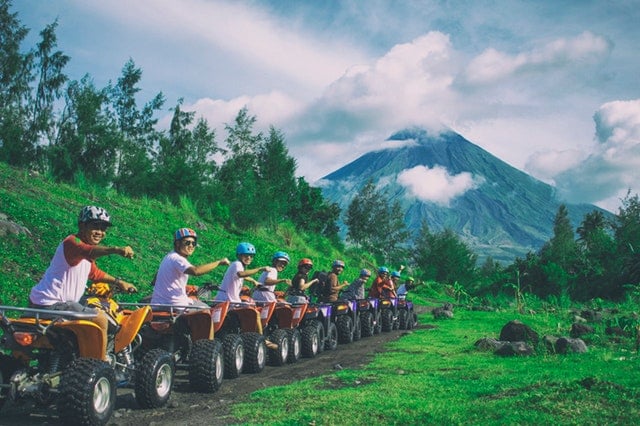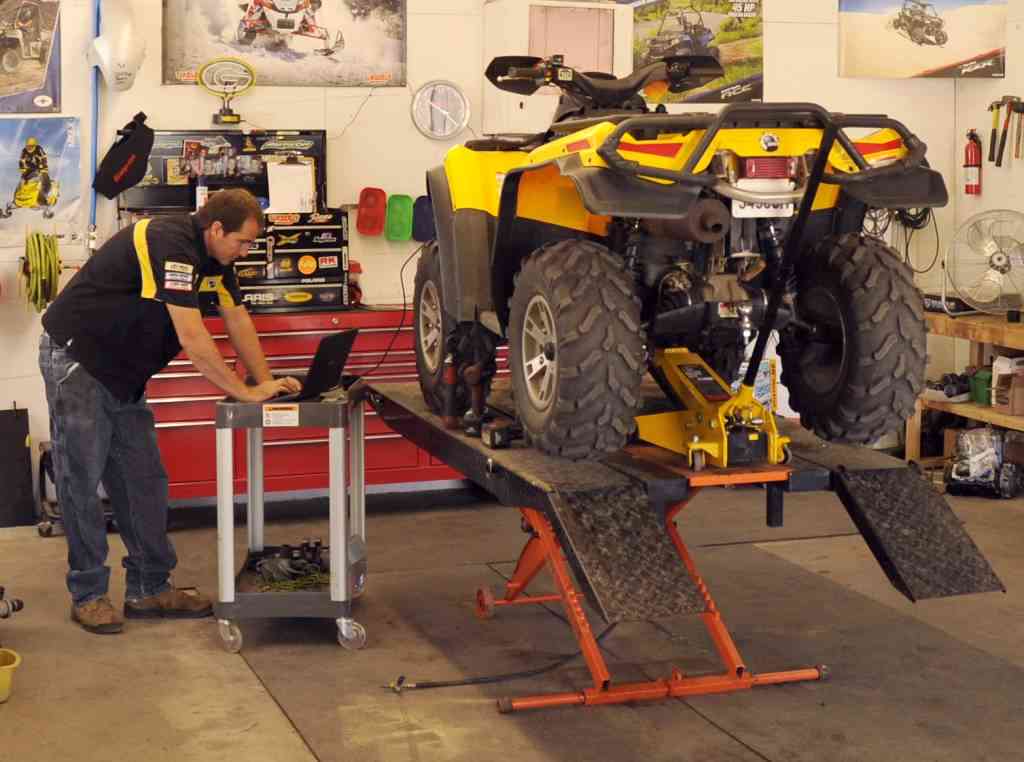Unleash Your Thrill-Seeking Spirit: ATV Riding Essentials for Every Fanatic
Wiki Article
ATV Riding Strategies: Mastering the Art of Off-Roading

Body Positioning
To effectively browse with challenging off-road terrain, it is important for ATV bikers to continually preserve correct body positioning. Preserving the appropriate body placement while riding an ATV not only boosts control and stability however additionally makes sure the motorcyclist's security. By taking on the proper body placing techniques, cyclists can effectively distribute their weight, boost their balance, and decrease the threat of injuries or mishaps.Placing the feet on the foot fixes allows the cyclist to keep security and control over the ATV. The rider's knees should be slightly bent, giving a small suspension to take in shocks and maintain equilibrium.
In addition, the cyclist's eyes should always be focused in advance, checking the surface and preparing for any kind of barriers or changes in the trail. By keeping an ahead gaze, cyclists can make instant decisions and respond appropriately to challenging surface.
Throttle Control
Structure upon the relevance of appropriate body positioning for ATV motorcyclists, grasping throttle control is a vital skill that allows motorcyclists to effectively navigate with numerous off-road terrains. Throttle control refers to the capability to manage the quantity of power delivered to the ATV's engine. By recognizing exactly how to adjust the throttle, motorcyclists can ensure a regulated and smooth acceleration, permitting them to navigate obstacles with precision.Sudden or jerky motions can cause the ATV to shed grip or come to be unstable, making it tough to keep control. This technique permits the ATV to maintain a steady rate and supplies much better grip, minimizing the risk of mishaps.
Along with smooth modulation, cyclists must likewise learn just how to stabilize the throttle with various other riding methods, such as body positioning and braking. When climbing up steep hills, bikers require to apply enough throttle to maintain energy without causing or subduing the atv wheel spin. Similarly, when coming down steep inclines, motorcyclists should utilize the throttle in combination with proper body stopping and positioning to preserve control and avoid the ATV from this post moving or tipping over.

Braking Techniques
additional hints An essential aspect of ATV riding strategies is mastering effective braking techniques. When it concerns off-roading, knowing exactly how to brake appropriately can make a substantial distinction in your safety and control over the vehicle. Among the most essential stopping strategies is utilizing the front brake even more than the rear brake. The front brake offers most of the stopping power, so it is essential to utilize it carefully. Nevertheless, it is very important to bear in mind that harsh braking with only the front brake can cause the ATV to pitch forward, potentially causing loss of control and even flipping over. Consequently, it is recommended to apply both brakes all at once, yet with even more pressure on the front brake. An additional essential method is to prevent securing the wheels while braking. Securing the wheels can lead to skidding, making it hard to maintain control. To avoid this, press the brake bars progressively and release them slightly if you feel the wheels locking. By mastering these braking methods, you can improve your ATV riding abilities and guarantee a pleasurable and safe off-roading experience.Cornering Strategies
One essential aspect of grasping ATV riding strategies is comprehending efficient cornering strategies. Catching on an ATV can be tough, however with the appropriate methods, cyclists can navigate turns safely and successfully. The trick to successful cornering is to maintain control of the ATV while making best use of traction and lessening the threat of tipping over.To carry out an appropriate cornering method, riders should come close to the turn at an appropriate speed, ensuring they are not going too rapid or as well slow. It is essential to shift the body weight in the direction of the inside why not try these out of the turn, leaning into it to keep equilibrium and security. This helps to counterbalance the centrifugal pressure and maintains the ATV upright.
Additionally, cyclists must keep their eyes concentrated on the leave factor of the turn rather than the immediate path ahead (ATV). This enables smoother and much more specific steering, as it helps the cyclist prepare for any challenges or changes in terrain
In addition, correct throttle control plays a considerable role in cornering. Cyclists have to regulate the throttle efficiently, staying clear of sudden accelerations or slowdowns, which can create loss of control.
Uphill and Downhill Riding
When browsing off-road terrain, ATV bikers have to understand the techniques for uphill and downhill riding to preserve control and make sure security. Downhill riding, on the other hand, requires motorcyclists to lean back and shift their weight in the direction of the rear of the ATV. By grasping the methods for uphill and downhill riding, ATV riders can confidently take on various off-road terrains and take pleasure in a risk-free and electrifying experience.Verdict
In verdict, mastering the art of ATV riding needs a combination of body positioning, throttle control, stopping techniques, and reliable cornering. Uphill and downhill riding likewise require specific abilities to navigate securely. By implementing these methods, riders can improve their off-roading experience and enhance their total control and safety on the ATV.ATV Riding Techniques: Understanding the Art of Off-Roading is a thorough guide that dives right into the details of understanding the abilities needed for off-road ATV riding. Whether you are a newbie or a knowledgeable cyclist, ATV Riding Techniques: Understanding the Art of Off-Roading supplies crucial suggestions to aid boost your off-road ATV riding skills to the next level.

Report this wiki page